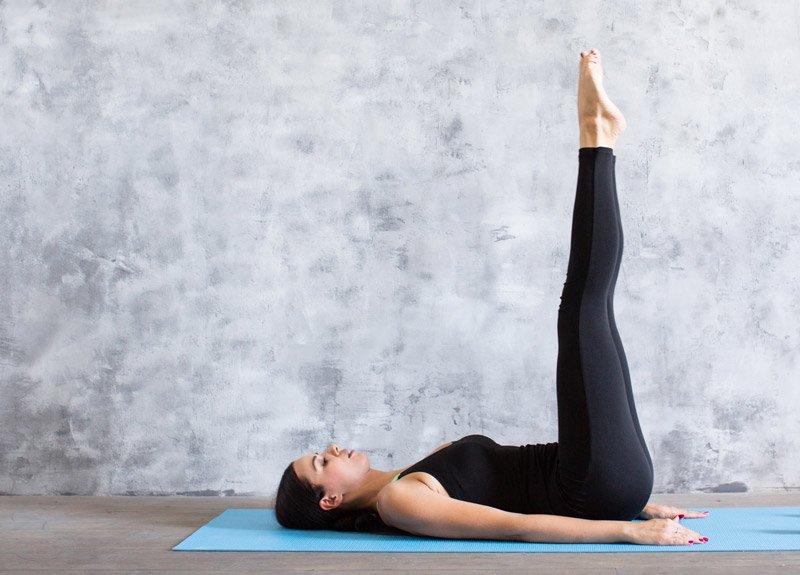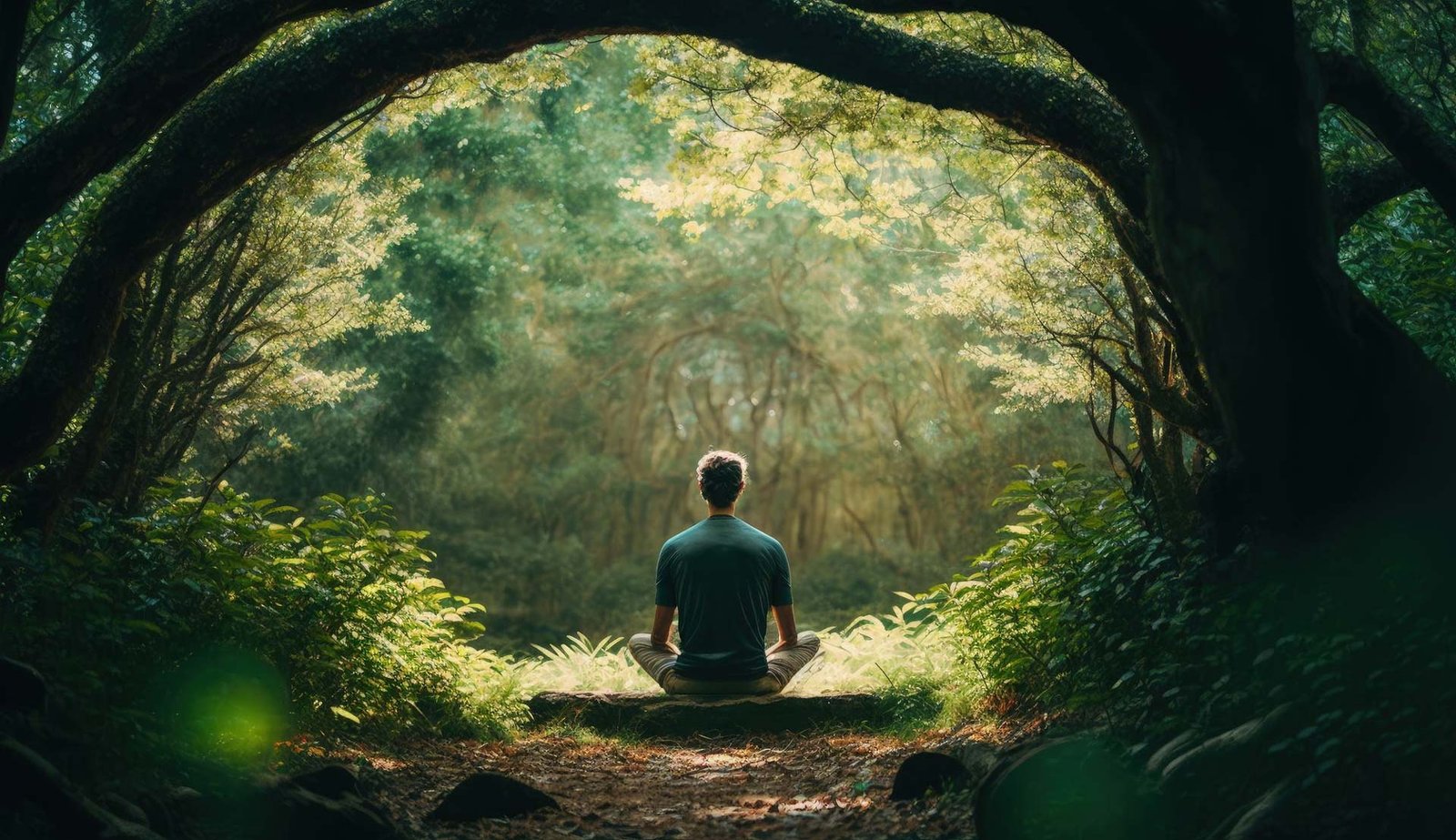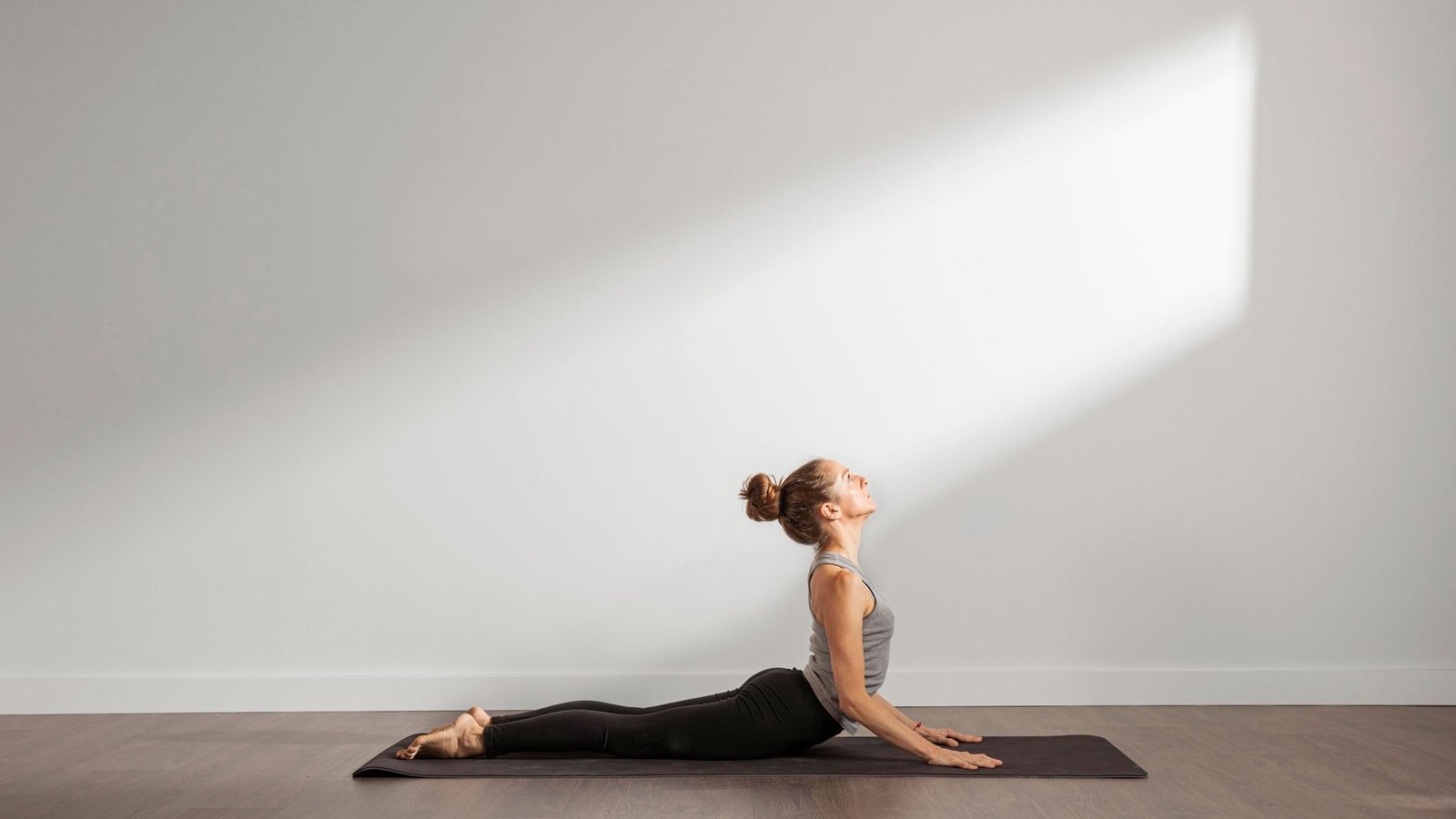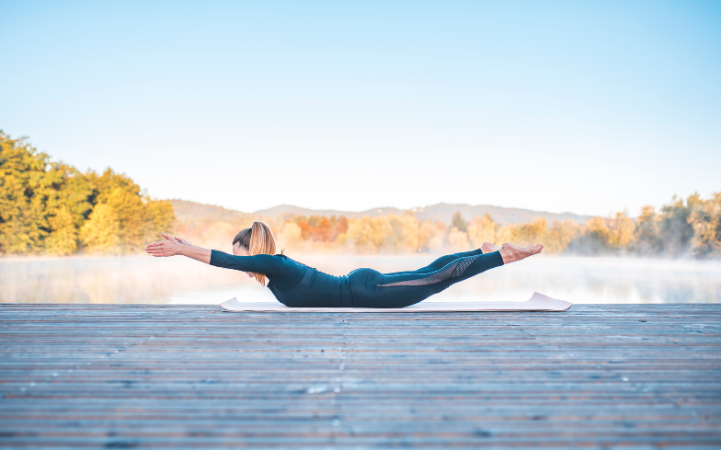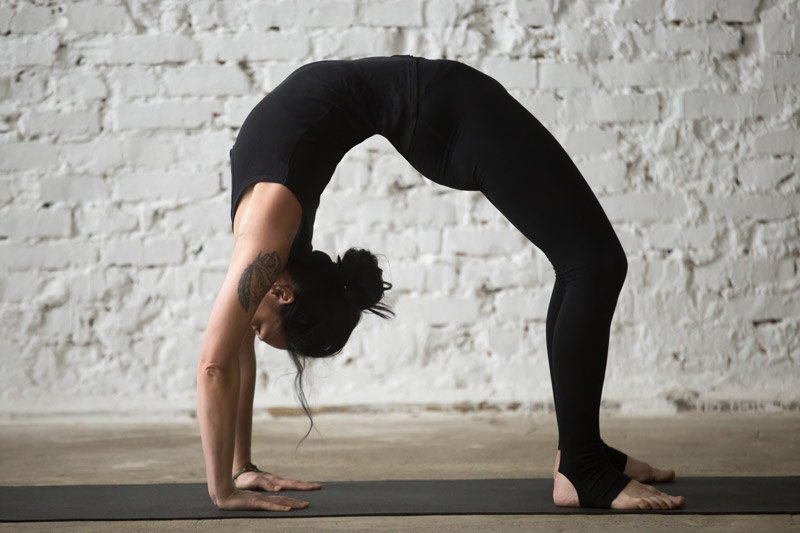Ardha Halasana, also known as the Half Plough Pose, is a simplified variation of Halasana (Plough Pose). The Sanskrit term Ardha means “half”, Hala means “plough”, and Asana means “pose”. In this posture, the legs are lifted to form a right angle with the upper body, offering many of the benefits of full inversions without putting excessive strain on the neck or spine. Ardha Halasana is ideal for beginners and those looking for a therapeutic pose to improve digestion, tone abdominal muscles, and stimulate the internal organs.
Steps to Perform Ardha Halasana
Starting Position: Lie flat on your back on a yoga mat with your legs together and arms resting by your sides, palms facing down.
Prepare with Deep Breaths: Take a few deep breaths to relax the body.
Inhale and Lift One Leg: On an inhale, slowly raise your right leg to a 90-degree angle, keeping it straight and the toes pointing upward. The left leg remains flat on the ground. Hold the position for a few breaths, then lower the leg down slowly on an exhale. Repeat with the left leg.
Lift Both Legs (Advanced): Once comfortable with one leg, you can raise both legs together to a 90-degree angle while keeping your back and hips on the floor.
Maintain the Position: Hold the position for 15–30 seconds initially, gradually increasing the duration with practice. Breathe normally.
Return to Rest: Slowly lower the legs back to the mat on an exhale without jerking or straining. Relax in Shavasana for a few moments.
Benefits of Ardha Halasana
Strengthens the Core: Engages and tones the abdominal muscles, promoting a strong and stable core.
Improves Digestion: The posture stimulates abdominal organs and improves the functioning of the digestive system.
Regulates Thyroid Function: Like other inverted poses, it stimulates the thyroid and parathyroid glands, improving hormonal balance.
Relieves Constipation and Gas: Promotes intestinal movement and relieves bloating and discomfort.
Reduces Belly Fat: Regular practice can help tone the lower abdominal region and reduce fat accumulation.
Calms the Nervous System: The posture promotes relaxation, reduces stress, and balances the autonomic nervous system.
Improves Blood Circulation: Inversion improves venous return and enhances oxygen delivery to the brain.
Strengthens Leg Muscles: Lifting the legs improves strength and flexibility in the thighs, hips, and calves.
Tips for Practicing Ardha Halasana
Use a Support: Place your hands under your hips or use a folded blanket under your lower back for support if needed.
Start Slowly: Begin with one leg at a time before attempting to lift both legs together.
Engage the Core: Use abdominal strength to lift the legs rather than relying on momentum.
Breathe Evenly: Maintain steady and deep breathing throughout the pose.
Use a Wall: Beginners can practice near a wall for safety and support.
Cautions and Contraindications
Spinal Disorders: Avoid this pose if you have herniated discs, sciatica, or recent back injuries.
Heart Conditions: People with heart problems should avoid holding the legs up for prolonged periods without guidance.
High Blood Pressure: Perform under supervision or avoid if you have uncontrolled hypertension.
Pregnancy: This pose is not recommended during pregnancy.
Menstruation: Women should avoid this posture during heavy menstrual flow.
Neck or Shoulder Pain: Ensure your neck remains relaxed; avoid the pose if there is pain or stiffness in the upper spine.
Ardha Halasana is a safe and effective yoga pose that offers many of the therapeutic benefits of full inversions without the intensity. It is especially beneficial for improving core strength, digestion, and circulation. With regular practice and proper alignment, this posture can become a gateway to deeper inversions while providing daily wellness support. Always listen to your body, and if you’re new to yoga or have medical conditions, consult a yoga teacher or healthcare professional before attempting.


